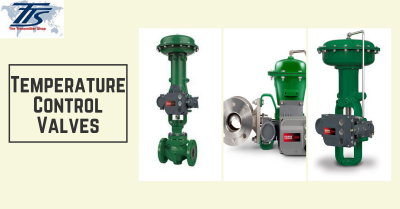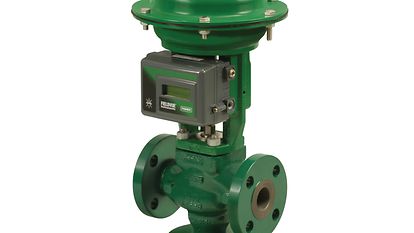
Maximize Power Savings and Convenience With Advanced Structure Automation Controls
In the world of contemporary design and facility monitoring, the integration of advanced structure automation controls stands as a pivotal advancement. The convergence of modern technology and sustainability has actually birthed a brand-new era where power effectiveness, comfort optimization, and operational streamlining are no much longer possible truths but remote aspirations. By using the power of automation, buildings can adjust, react, and progress in manner ins which were once unthinkable. The capacity for significant energy savings and enhanced convenience is not simply an opportunity however a promise waiting to be fulfilled. This standard change in building administration holds the essential to opening a world where ecological conscientiousness and owner well-being sympathetically exist side-by-side within the wall surfaces of our structures.
Energy Performance Perks
Power performance advantages can substantially minimize power intake and operational prices in buildings. Energy-efficient systems, such as sophisticated structure automation controls, can maximize the use of resources like lights, cooling, and heating, leading to lower power expenses over time.
Furthermore, improved energy efficiency can lengthen the life expectancy of building equipment and systems. By operating more successfully, a/c systems, light, and various other structure components experience much less deterioration, causing reduced upkeep and replacement costs. Additionally, energy-efficient buildings frequently command higher residential or commercial property worths and rental rates, providing long-term economic benefits to proprietors.
Moreover, energy performance can improve occupant comfort and performance. Properly controlled interior settings with ideal lighting and thermal problems create a more helpful and pleasurable workspace, bring about boosted employee satisfaction and efficiency. In general, the energy effectiveness advantages related to sophisticated building automation controls are diverse, including price savings, ecological stewardship, and passenger wellness.
Improved Convenience Control
Enhancing comfort control in structure atmospheres requires an innovative assimilation of advanced automation systems for ideal owner wellness. By using sophisticated building automation controls, facilities can tailor the indoor atmosphere to fulfill the particular demands and preferences of occupants. control valves.
Boosted convenience control goes beyond fundamental temperature level modifications. It includes features such as personalized settings, occupancy sensors, and all-natural light use to develop a receptive and vibrant environment. By including these innovative controls, structures can not only boost comfort however additionally enhance energy performance by optimizing system procedures based upon real occupancy and usage patterns. Eventually, focusing on passenger convenience via innovative automation systems results in a much more enjoyable and healthier indoor setting.
Operational Efficiency Improvements

In addition, the implementation of real-time monitoring and analytics devices allows building drivers to determine energy ineffectiveness and operational abnormalities immediately. By continuously keeping track of energy usage moved here patterns and system efficiency metrics, adjustments can be made in real-time to enhance power consumption and guarantee peak functional effectiveness. control valves. In addition, including demand feedback methods right into structure automation controls can further improve functional efficiency by dynamically readjusting energy use based on grid conditions and pricing signals
Indoor Climate Optimization
Effective interior environment optimization site here is an essential element of building automation controls, ensuring occupants' convenience and wellness while making best use of power savings. By using innovative sensors and controls, developing automation systems can continually keep track of and adjust temperature level, moisture levels, air high quality, and air flow to develop an optimum interior environment. Preserving consistent and comfy problems not just improves passenger complete satisfaction however additionally increases productivity and general health.
Indoor climate optimization also plays a crucial role in energy effectiveness. By fine-tuning heating, air conditioning, and air flow systems based on real-time data and tenancy patterns, constructing automation controls can considerably decrease power usage - control valves. Carrying out approaches such as demand-controlled air flow and thermal zoning can assist lessen power waste while guaranteeing that each area of the building gets the needed conditioning.

Lasting Environment Production
Building automation manages not just optimize indoor climate conditions for energy performance and resident comfort but also lay the structure for developing a sustainable atmosphere with critical management of systems and sources. By integrating sophisticated building automation modern technologies, such as sensing units, actuators, and smart software program, facilities can change and keep an eye on power use in real-time to minimize waste and decrease their carbon footprint. These systems make it possible informative post for anticipating maintenance, identifying prospective concerns before they escalate and maximizing equipment efficiency to enhance durability and performance.
In addition, lasting setting production extends past power management to encompass water preservation, waste decrease, and interior air quality improvement. Building automation controls can manage water usage, spot leaks, and make sure correct waste disposal practices, adding to general sustainability efforts. Furthermore, by controlling and keeping an eye on air flow and filtering systems, these technologies enhance resident health and wellness and performance while decreasing energy consumption related to HVAC procedures.
Verdict
Finally, progressed building automation controls offer substantial advantages in regards to power savings, convenience control, functional effectiveness, interior climate optimization, and developing a sustainable atmosphere. By implementing these controls, buildings can attain optimal efficiency while minimizing energy consumption and enhancing passenger comfort. It appears that the usage of advanced automation innovation is crucial in enhancing structure efficiency and developing a much more lasting future.
Power performance advantages can dramatically lower energy consumption and operational expenses in structures. Overall, the power efficiency benefits linked with sophisticated building automation controls are complex, incorporating expense financial savings, ecological stewardship, and resident wellness.
In addition, including demand feedback strategies right into structure automation controls can additionally improve operational efficiency by dynamically adjusting power use based on grid problems and prices signals.
Structure automation regulates not only maximize indoor environment conditions for energy performance and passenger comfort yet likewise lay the foundation for developing a sustainable environment with calculated management of systems and resources.In verdict, progressed structure automation manages offer significant advantages in terms of energy savings, convenience control, functional effectiveness, interior climate optimization, and creating a lasting setting.